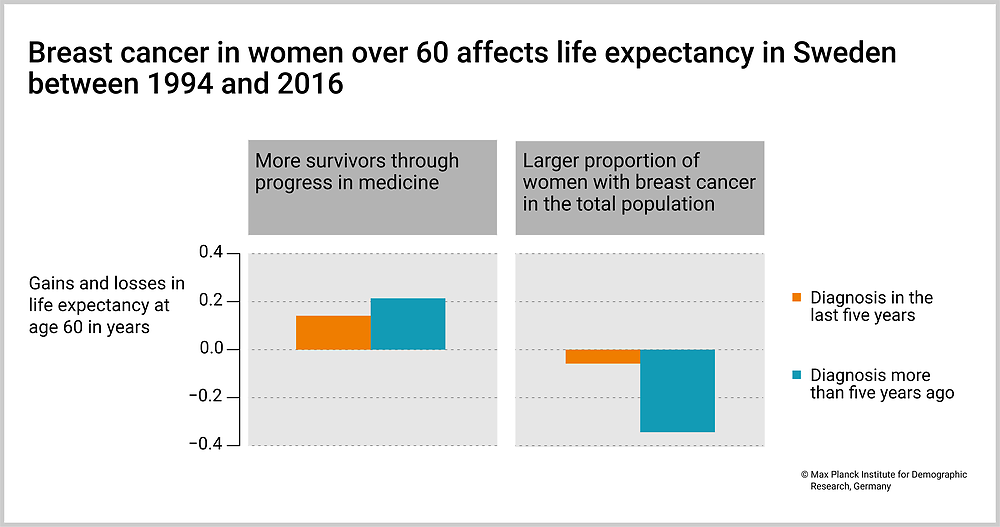October 15, 2020 | Press Release
How individual diseases affect the life expectancy of the entire population

If the proportion of people who survived a major disease in the total population increases, life expectancy may not increase further in the future. © iStockphoto.com/toa55
Better safe than sorry. With diseases, this applies not only to each and every one of us, but also to society as a whole. Life expectancy in Western Europe could soon stop rising if more and more people with a history of illness were to live.
Marcus Ebeling, a scientist at the Max Planck Institute for Demographic Research (MPIDR) in Rostock, Germany, and his colleagues used a new method to analyze data sets to investigate two questions: how does an improved chance of every individual to survive a heart attack influence the life expectancy of the entire population? The researchers also analyzed this question for stroke, hip fracture, colon cancer and breast cancer. And secondly, if more and more people survive these diseases, what effect does that have on the life expectancy of the entire population? After all, people with a history of illness generally have a higher mortality than the average population. If their proportion in the population grows, this also has an increasing influence on average life expectancy. In the long run, this can lead to a slower increase in life expectancy, or even to no increase at all.
This was calculated by Marcus Ebeling and colleagues in a study that has now been published in BMC Public Health. For their analyses, they used data of men and women over 60 from Swedish registers, collected between 1994 and 2016. In this period the life expectancy increased by about 3.4 years for men and by about 1.9 years for women.

© MPIDR
Download Figure (PNG File, 408 kB)
However, the example of breast cancer shows that individual diseases can offset parts of this increase. Since more and more women are living with breast cancer, the life expectancy of the population as a whole benefits less from medical progress. The effect of the increased chance of survival after a breast cancer diagnosis was therefore bigger than the effect of reducing the number of cases. “This development is naturally very good for each individual survivor. But a lower number of women suffering from breast cancer would be even better,” says Marcus Ebeling.
The picture is different in the case of heart attacks and strokes. These diseases have made a significant contribution to increasing the life expectancy of the entire population due to improved survival rates and a decreasing number of people who suffer a heart attack or stroke.
Original publication
Ebeling, M., Meyer, A.C., Modig, K.: The rise in the number of long-term survivors from different diseases can slow the increase in life expectancy of the total population. BMC Public (2020) DOI: https://doi.org/10.1186/s12889-020-09631-3